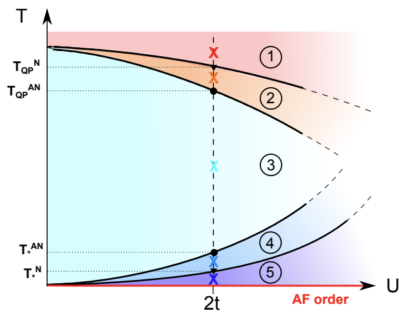Tracking the Footprints of Spin Fluctuations: A Multi-Method, Multi-Messenger Study of the Two-Dimensional Hubbard Model
The Hubbard model represents the fundamental model for interacting quantum systems and electronic correlations. Using the two-dimensional half-filled Hubbard model at weak coupling as testing grounds, we perform a comparative study of a comprehensive set of state of the art quantum many-body methods. Upon cooling into its insulating antiferromagnetic ground-state, the model hosts a rich sequence of distinct physical regimes with crossovers between a high-temperature incoherent regime, an intermediate temperature metallic regime and a low-temperature insulating regime with a pseudogap created by antiferromagnetic fluctuations. We assess the ability of each method to properly address these physical regimes and crossovers through the computation of several observables probing both quasiparticle properties and magnetic correlations, with two numerically exact methods (diagrammatic and determinantal quantum Monte Carlo) serving as a benchmark. By combining computational results and analytical insights, we elucidate the nature and role of spin fluctuations in each of these regimes and explain, in particular, how quasiparticles can coexist with increasingly long-range antiferromagnetic correlations in the metallic regime. We also critically discuss whether imaginary time methods are able to capture the non-Fermi liquid singularities of this fully nested system.

